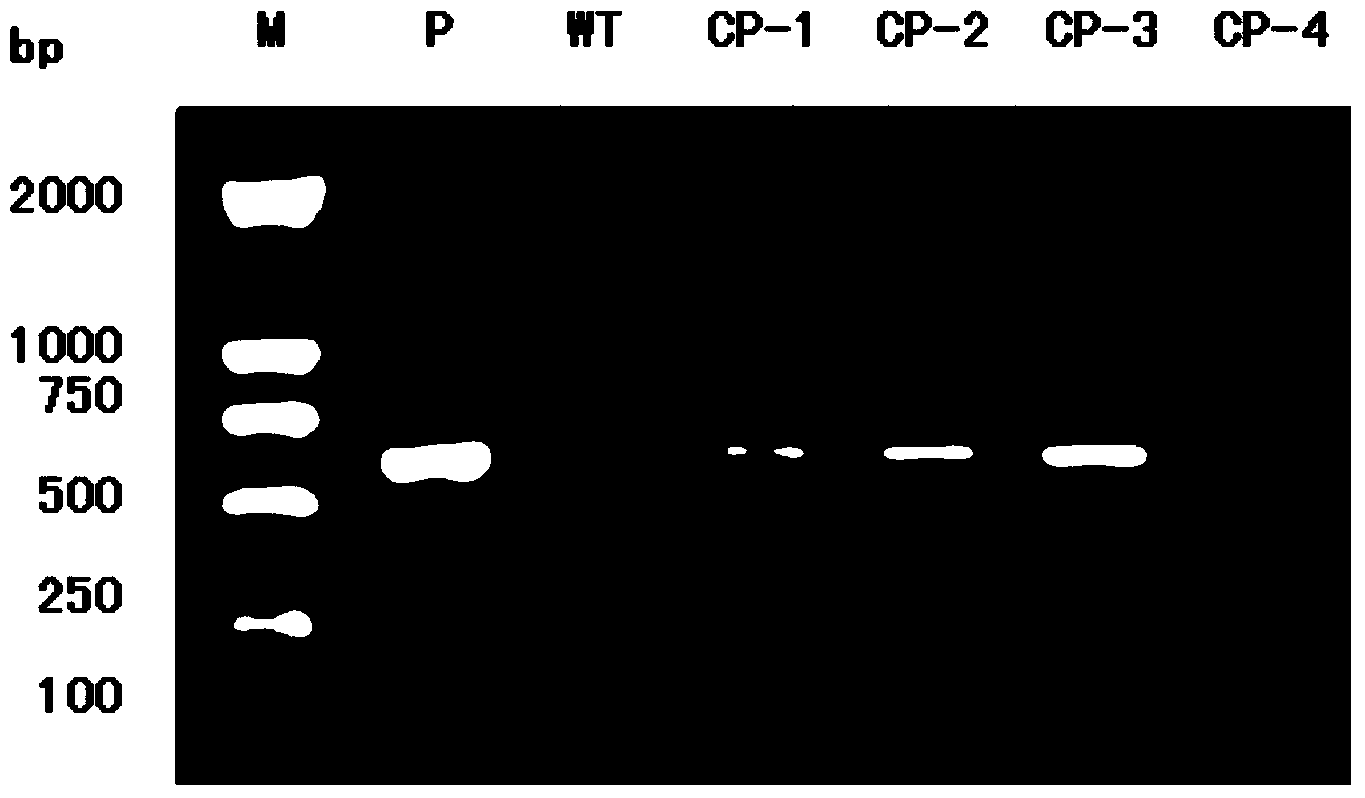Method for improving conversion rate of foreign gene of stem tip meristem of yellowing seedling of cotton
A technology of stem tip meristem and etiolated seedlings, applied in the field of plant genetic engineering, can solve the problems of long transformation cycle, difficult plant regeneration, low efficiency, etc.
- Summary
- Abstract
- Description
- Claims
- Application Information
AI Technical Summary
Problems solved by technology
Method used
Image
Examples
Embodiment 1
[0039] Embodiment 1, apply the method of the present invention to obtain transgenic cotton
[0040] 1. Obtaining recombinant Agrobacterium
[0041] The target gene TsVP (genbank registration number AY436553) was recombined into the plant binary expression vector pCAMBIA1300-TsVP-als.
[0042]The plasmids used to construct plant expression vectors are: pCAMBIA1300-P35SMCSTnos–als (abbreviation: pCPA) and pCAMBIA1300-Pubi-TsVP-Tnos-als (abbreviation: pCUA-TsVP), in which pCPA contains CaMV35S promoter, herbicide resistance selection marker gene als and a multiple cloning site (MCS), pCUA-TsVP contains the TsVP gene. Digest the pCUA-TsVP plasmid DNA with XbaI, recover the TsVP fragment, connect it to the pCPA multiple cloning site to identify the insertion direction, and obtain the plant expression vector pCAMBIA1300-P35S-TsVP-Tnos–als ( figure 1 ).
[0043] The pCAMBIA1300-P35S-TsVP-Tnos–als vector was transformed into Agrobacterium tumefaciens LBA4404 to obtain recombinant A...
PUM
 Login to View More
Login to View More Abstract
Description
Claims
Application Information
 Login to View More
Login to View More - R&D
- Intellectual Property
- Life Sciences
- Materials
- Tech Scout
- Unparalleled Data Quality
- Higher Quality Content
- 60% Fewer Hallucinations
Browse by: Latest US Patents, China's latest patents, Technical Efficacy Thesaurus, Application Domain, Technology Topic, Popular Technical Reports.
© 2025 PatSnap. All rights reserved.Legal|Privacy policy|Modern Slavery Act Transparency Statement|Sitemap|About US| Contact US: help@patsnap.com



